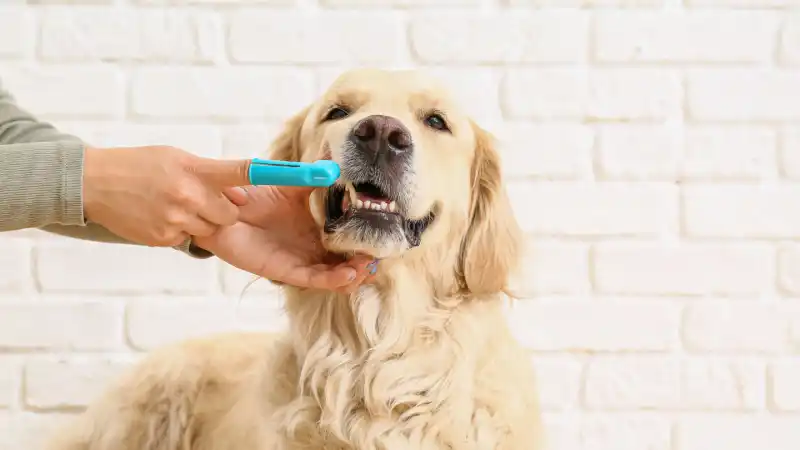3 Natural Ways to Offset the Pain of Hip Dysplasia in Dogs
Hip Dysplasia is a genetic condition that can cause pain & affect your dog's quality of life. Here are signs of hip dysplasia & natural home remedies to treat pain.

Hip dysplasia is a genetic condition that results in a poor fit of the ball of the hip into the socket. The medically accurate terms for these anatomic parts are the femoral head (ball) and the acetabulum (socket). Large-breed dogs are most commonly affected, and while they are already predisposed at birth, they may show no signs of discomfort or reduced mobility for years. Hip dysplasia is most accurately diagnosed via radiographs (x-rays), which are typically taken because a dog is either symptomatic or they need to be screened prior to breeding.
There are two accepted systems for properly evaluating a dog for hip dysplasia using radiographs. The first system was developed by the Orthopedic Foundation for Animals (OFA), whose main goal is to reduce the incidence of genetic and orthopedic diseases like hip dysplasia. Dogs evaluated using this technique must be 2 years of age or older. The second system is referred to as PennHip Certification and was developed at the University of Pennsylvania as part of their Hip Improvement Plan. This technique can be performed when your dog is as young as 4 months of age, but does require that the veterinarian taking the radiographs undergo special training and obtain specific equipment.
Signs of Hip Dysplasia and Treatment Options
Often, the first signs of hip dysplasia are a wobbly hind end or a sway in your dog’s gait. As your dog gets older, the poor fit of the femoral head (ball) into the acetabulum (socket) results in the development of osteoarthritis, including the formation of osteophytes (bone spurs). Signs of discomfort and pain typically do not occur until there is some level of bony change or arthritis. This is why many dogs go undiagnosed until they are seniors and can no longer hide or override the pain. Once a dog has been diagnosed with hip dysplasia, there are several surgical options that may or may not be appropriate depending on the dog’s age and the level of destruction in their coxofemoral (hip) joints. Surgical options should be discussed and reviewed with a veterinarian that specializes (and is board certified) in orthopedic surgery.
If surgery is not an option, either because your dog is not a good candidate or their human elects not to proceed, then multimodal pain and arthritis management are imperative in providing an acceptable quality of life. Pharmaceuticals such as dog-specific non-steroidal anti-inflammatory drugs (NSAIDs) and analgesics (pain medications) will likely be necessary once the dog shows signs of discomfort. These must be prescribed by a veterinarian, who will come up with the best combination for your dog based on their signs, physical exam, and the appearance of the radiographs. The veterinarian will likely put your dog on a trial plan and then ask that your dog return for follow-up evaluation and lab screening.
The lab screening tests are to ensure that your dog is not at risk for kidney, liver, or other abnormalities that can occur secondary to the use of these medications. A dog with hip dysplasia, especially if they are taking medications, should be seen at least every 6 months by their veterinarian. This gives your veterinarian the best chance at helping your dog live their most comfortable and healthy life.
What if your dog has hip dysplasia but is not symptomatic yet? What else can be done to slow the progression of arthritis and reduce pain if your dog is not a surgical candidate? What if your dog CAN’T take the medications because they experience side effects? These are tough questions, and this is where natural supplements and strategies can truly augment your dog’s multimodal care plan. There are many options for supplementation and several alternative medicine strategies that can help.

Every Dog and Cat Deserves the Pet Insurance of Champions
Get prize-winning care for your pets.
3 Natural Options to Counteract Hip Dysplasia
Glucosamine/Chondroitin Supplements
Glucosamine, derived from seal mollusks, regulates the synthesis of collagen in cartilage and may have mild anti-inflammatory effects. Chondroitin, typically obtained as chondroitin-sulfate salt, helps to stop the destruction of cartilage and the sulfate provides essential ingredients for chondrocytes (the cells involved in making more cartilage). When glucosamine and chondroitin are administered together, they work synergistically to promote the synthesis of cartilage and reduce inflammation in the joints. Why is this important for a dog with hip dysplasia? The inappropriate fit of the ball into the socket of the hip joint causes destruction of cartilage, inflammation of the joint, and pain. In addition, your dog will begin shifting weight off of their hips and hind end, putting stress on cartilage and joints in other areas of their body. Supplements that benefit the cartilage and reduce inflammation can potentially reduce your dog’s pain and extend their comfort and quality of life.
Omega-3 Fatty Acid Supplementation
Omega-3 fatty acids, specifically EPA and DHA, have been shown to reduce inflammation associated with osteoarthritis and neurologic conditions. Dogs and cats cannot make enough Omega-3 fatty acids on their own and must be obtain them through diet and supplementation. Supplements derived from cold water fish products such as Nordic Naturals Omega-3 Pet are the best option. Cod liver oil should be avoided due to its high concentration of Vitamin A, and flax seed oil is useless as dogs and cats cannot convert it into a usable derivative. As an added bonus, Omega-3 fatty acids have also been shown to support the kidneys (which are needed to process NSAIDS and medications).
Acupuncture
Acupuncture has been shown to reduce pain and improve mobility in animals with musculoskeletal problems, such as arthritis and hip dysplasia. Acupuncture points are specific anatomic locations on the surface of the body that can be stimulated to relieve pain and elicit other positive responses. Typically, the points are treated using very fine needles and most dogs are tolerant and even enjoy the treatment. The positive actions of acupuncture include the release of tension or tightness in the body, modulation of endorphins (the body’s natural pain killers), and improved circulation. These actions can contribute to comfort and better long-term function for a dog with arthritis and/or hip dysplasia. Since hip dysplasia and arthritis cannot be reversed, acupuncture is most effective when performed on a regular basis such as every 4-8 weeks. If your veterinarian is not certified in acupuncture, you can ask them for a referral or search for a veterinary acupuncturist near you through this search option provided by the International Veterinary Acupuncture Society (IVAS).
Hip dysplasia is an unfortunate genetic disease and will eventually result in pain and dysfunction for dogs affected by it. However, much can be done to offset the pain and slow the progression of arthritis, especially if it is detected early. The best course of action, especially if you have a large breed or symptomatic dog, is to open a conversation with your veterinarian and to work closely with them to form a plan.
Unfortunately, multimodal treatment for hip dysplasia pain can be expensive. Pet insurance for your dog may help to offset the pain in your pocketbook. AKC Pet Insurance (underwritten by Independence American Insurance Company) offers coverage for alternative treatment after a 30-day waiting period, as long as it’s related to an eligible condition that was diagnosed by a vet and you opted for the Hereditary Coverage add-on.

Every Dog and Cat Deserves the Pet Insurance of Champions
Get prize-winning care for your pets.
Nell Ostermeier is an Integrative Veterinarian, Motivator, Lecturer, and Consultant.
READ MORE ARTICLES

